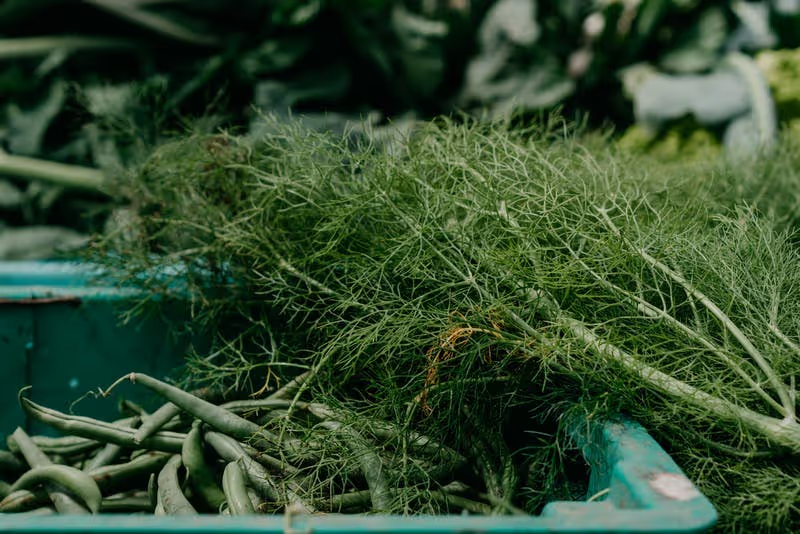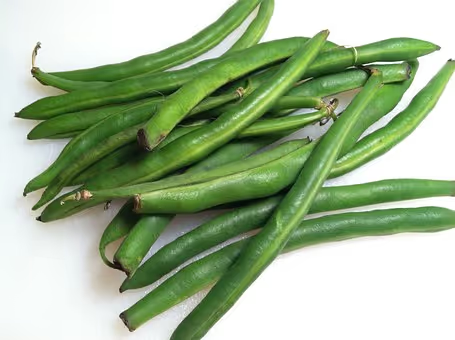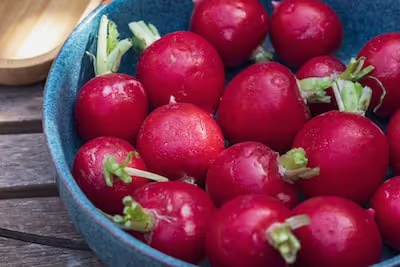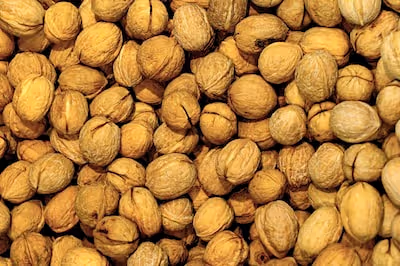Growing Dill: Easy Steps to Cultivate a Healthy Herb Garden

Growing Dill
Growing dill flavor-packs your garden, feeds pollinators, and amps up home-cooked dishes. Growing dill means direct-sowing seeds outdoors in spring, picking a sunny spot, and keeping soil evenly moist. Growing dill close to veggies like cucumbers or tomatoes boosts flavor and helps repel pests—but there's plenty more you need to know to keep this aromatic herb thriving until harvest.
Cheatsheet: Dill Growing Made Simple
🌱 Site & Soil
- Sun: 6+ hrs direct light
- Soil: Loose, well-drained, pH 5.5-6.5
- Temp: 60–75°F (16–24°C)
- Nutrition: High in vitamin C, antioxidants
🗓️ Sowing & Spacing
- Sow direct after frost, ¼ in (6 mm) deep
- Rows: 12 in (30 cm) apart, thin to 10 in (25 cm)
- Succession sow every 3 weeks
💧 Water & Care
- Keep soil moist, never soggy
- Avoid overhead watering
- Mulch lightly to retain moisture
🌾 Harvest & Use
- Harvest leaves at 8 in (20 cm) tall
- Cut early morning for best flavor
- Use fresh in fish, yogurt, salads
- Dry or freeze leaves for storage
🦋 Health & Self-sufficiency
- Boosts digestion & immunity
- Attracts pollinators & controls aphids
- 100g dill: Only 43 kcal, rich in folate, iron
🧰 Tools and products you'll need
- Dill seeds
- Trowel
- Watering can
- Compost
- Pruning snips
- Optional: Row cover
⚡ Quick Steps
- Select sunny, well-drained spot
- Prepare soil with compost
- Sow seeds shallowly, ¼ in (6 mm) deep
- Water gently and regularly
- Thin plants to 10 in (25 cm) apart
- Harvest leaves or seeds as needed
-
Growing Dill: Easy Steps to Cultivate a Healthy Herb Garden
I seed dill the way I salt food, a little everywhere, because it thrives where it lands. It forgives small mistakes and repays with fragrance that cuts through a heavy stew like a sea breeze.
Site and soil dial-in
Give dill full sun and quick-draining soil, then get out of its way. Aim for a loose loam with pH 6.0 to 7.5 and organic matter worked in like breadcrumbs.
Raised beds shine for Growing Dill, since soggy roots sulk. If your soil crusts, mix in compost and a touch of coarse sand for air.
Direct sowing beats transplant fiddling
Dill grows a long taproot that hates disturbance, so I direct sow. Plant seeds 0.25 inch deep (6 mm), then firm gently so the soil kisses the seed.
Space seeds like pepper, thin seedlings to 8 inches (20 cm) for leaf harvest, or to 12 inches (30 cm) if you want big seed heads.
Germination lands in 7 to 14 days at 60 to 70 F (16 to 21 C) with steady moisture.
Water, light, and feed
Keep soil evenly moist, about 1 inch (25 mm) of water per week, more in hot wind. Mulch with shredded leaves or straw to curb evaporation and cool roots.
Full sun rules, at least 6 hours, though light afternoon shade keeps plants calmer in high heat. A light, balanced feed at sowing is plenty, since excess nitrogen makes lush, floppy, flavor-light growth.
Temperature and timing
Dill likes cool spring and fall, roughly 40 to 75 F (4 to 24 C). It tolerates a light frost, then shrugs and keeps going.
Succession sow every 2 to 3 weeks from last spring frost until midsummer, then again late summer for fall pickles. In heat, harvest fast before flavor slips.
Managing bolting without losing your cool
Long days and heat push dill to flower, which is great for seed and pollinators but shortens leaf time. I plant in blocks, harvest one, let one flower, and seed a fresh block nearby.
For leafy growth, try morning sun with a bit of late-day shade and keep water steady. Heat-stressed dill bolts like a drummer on espresso.
Containers and compact spaces
Use a pot at least 12 inches deep (30 cm) with free-draining mix, then direct sow in place. Thin to one plant per 8 to 12 inches (20 to 30 cm) and rotate the pot for even light.
Indoors, provide bright south light or a full-spectrum grow light at 6 to 8 inches (15 to 20 cm) above the canopy, 12 to 14 hours daily. Keep room temps near 68 F (20 C) and air moving.
Staking and wind
Tall types like ‘Mammoth’ reach 3 to 4 feet (90 to 120 cm) and can lodge in storms. I tuck a bamboo cane beside each clump and loop twine loosely.
In open sites, a short mesh fence dampens wind and keeps stems upright for clean umbels.
Companions, ecology, and beneficials
Dill’s umbrella-like umbels pour nectar for lacewings, hoverflies, parasitic wasps, and lady beetles. Those hunters scour aphids off brassicas and roses like pros.
A single hoverfly larva can consume hundreds of aphids during its brief life, according to multiple university extension bulletins.
Plant near cabbage, kale, cucumbers, and onions to invite allies. Keep some distance from carrots and parsley to reduce shared pest pressure.
Pests and diseases, handled fast
Aphids cluster on tender tips; blast with water, then release or attract predators with blooming dill, alyssum, and yarrow. Swallowtail caterpillars love dill; I share a plant or two and net the rest with insect fabric.
Damping-off hits crowded, wet seedlings, so thin early and water in the morning. Powdery mildew pops in late season humidity; prune for airflow and avoid overhead irrigation late in the day.
Harvesting leaves, flowers, and seed
Start snipping leaves when plants hit 6 to 8 inches tall (15 to 20 cm), always leaving at least a third to regrow. Morning harvest packs the most aroma.
For pickling, clip green flower heads when the umbels fill out but before brown seeds appear. For spice seed, bag seed heads when they bronze, hang in a dry spot, then rub seeds free and store airtight.
Flavor, storage, and preservation
Use fresh leaves within 2 to 3 days, stems in a jar of water in the fridge like cut flowers. For longer storage, mince and freeze in oil, or dry gently at 95 F (35 C) to keep color.
Dill seed tastes warm and citrusy; I grind small batches for salmon rubs and potato salads. It also infuses vinegar like a charm.
Varieties I rate highly for Growing Dill
- ‘Bouquet’ – Fast, compact, fragrant leaves and tidy heads for pickles.
- ‘Dukat’ – Leaf-forward, slow to bolt, with strong anise-citrus notes.
- ‘Hera’ – Bushy, short internodes, great for containers and repeat leaf harvests.
- ‘Mammoth’ – Tall, big heads for serious seed yield and classic deli pickles.
- ‘Fernleaf’ – Dwarf habit for windowsills and tight beds, steady leaf set.
Step-by-step: my no-fuss dill routine
- Prep a sunny strip with compost, rake a fine tilth, and water to settle dust.
- Scatter seed thinly, cover 0.25 inch (6 mm), and firm with the back of a rake.
- Keep evenly moist until emergence; thin in two rounds to final spacing.
- Mulch lightly, stake tall types, and sow a fresh row every 2 to 3 weeks.
- Harvest leaves at 6 to 8 inches, then let select plants flower and set seed.
Commercial choices and gear that earn their keep
- Seeds: Choose fresh stock from reputable suppliers labeled for the current season, since dill seed viability drops after a year or two.
- Soil mix: A peat-free, well-drained blend with compost and perlite keeps roots breathing.
- Watering: A fine-rose watering can or low-flow wand prevents seed washout.
- Row cover: Lightweight fabric deters pests while allowing light and rain.
- Drying rack: Mesh racks or paper bags for clean seed curing without mold.
- Grinder: A small burr grinder dedicated to spices for fresh, volatile seed aromatics.
Troubleshooting quick hits
- Leggy, floppy seedlings: Increase light intensity or move outdoors to full sun, and thin.
- Plants bolt early: Increase moisture, add afternoon shade, and start a later sowing.
- Yellowing leaves: Ease off nitrogen, check for soggy soil, and improve drainage.
- Weak flavor: Harvest earlier in the day and avoid overfertilizing with high-nitrogen feeds.
Pro tips from many seasons
Interplant dill with spring lettuce as living shade; by the time dill hits bloom, the lettuce is gone and the dill owns the space. I also let a few volunteer plants pick their spots, since self-sown dill often grows tougher and tastier.
If wind hammers your site, sow dill in a zigzag ribbon instead of a straight line to break gusts. That small tweak keeps stems upright and umbels clean for seed.
Science notes that match field results
Extensions from Minnesota, Wisconsin, and UC point out that dill prefers direct sowing due to root disturbance issues, which matches field performance. Royal Horticultural Society guidance on full sun and drainage mirrors the happiest plantings in my beds.
Full sun is 6 or more hours of direct light per day, per USDA garden guidance.
Season stretching
For early spring, I sow under clear row cover to warm soil 3 to 5 F (2 to 3 C) and speed germination. For late fall, I sow in late summer and net against caterpillars, then harvest into the first frost.
Smart pairings in the kitchen
Fresh dill snipped over eggs, yogurt-cucumber salad, or grilled trout rewires a long day in the garden. Dill seed blooms in soups and pickles, where heat unlocks the volatile oils.
Sources and further reading
- USDA: Definitions of full sun and irrigation basics for home gardens.
- Royal Horticultural Society: Dill cultural notes on sowing in place and soil drainage.
- University of Minnesota Extension: Cool-season herb culture and germination temperature ranges.
- UC IPM: Beneficial insects attracted by umbellifer flowers and aphid biocontrol.
- Penn State Extension: Culinary herb production, fertilization, and harvest practices.
Frequently Asked Questions about Growing Dill
Which location provides optimal dill growth?
Dill thrives best in a sunny area receiving at least 6 hours of direct sunlight daily. Select a planting site with well-drained soil to ensure healthy herb development.
What type of soil promotes healthy dill growth?
Choose a fertile, loamy soil that drains efficiently. Dill prefers neutral to slightly acidic soil with a pH ranging between 6.0 and 7.0.
What's the ideal planting method for dill seeds?
Sow dill seeds directly into prepared soil about ¼ inch (0.6 cm) deep, spacing them roughly 12 to 18 inches (30 to 45 cm) apart. Dill does not favor transplantation, so direct sowing ensures optimal growth.
How frequently should dill plants be watered?
Water dill consistently, ensuring the soil remains moderately moist but not soggy. Approximately 1 inch (2.5 cm) of water weekly supports healthy growth, adjusting slightly based on rainfall and heat conditions.
At which temperature does dill flourish best?
Dill matures optimally in mild to warm temperatures, typically between 60 to 75°F (15 to 24°C). Sow seeds in early spring after frost danger passes for the best results.
What's the timeframe until harvested dill is ready?
Fresh dill leaves become available for harvest approximately 40 to 50 days after planting. Carefully clip the leaves regularly to encourage continual growth and delay seed setting.
Can you cultivate dill alongside other vegetables?
Absolutely; dill grows productively near vegetables such as cucumbers, lettuce, onions, and cabbage. Conversely, avoid planting dill next to carrots or fennel, as they can negatively influence each other's growth.
Growing dill rewards you with flavor, fragrance, and a touch of wild beauty in your garden. Let the soil stay loose, the sun abundant, and water just right—dill doesn’t ask for much but gives generously. Snip what you need, let some flower for pollinators or self-seed, and your herb patch keeps rolling season after season. If you’re hooked on fresh herbs, consider pairing your dill with chives or cilantro for even more kitchen magic. In the end, growing dill is about small investments and big payoffs—just the way gardening should be.
Pro Tips for Organic Dill Cultivation Success
Boost Germination Naturally
- Pre-soak dill seeds overnight in lukewarm water to activate enzymes, increasing germination by 20%.
- Cover seed rows with fine organic compost to maintain consistent moisture and warmth (optimal 60-70°F/15-21°C).
Companion Planting to Drive Yield & Flavor
- Plant dill near brassicas (broccoli, cabbage) to attract beneficial wasps, reducing aphid populations by 30%.
- Pair dill with cucumbers for mutual pest deterrence, promoting healthier harvests and 15% higher yields.
- Avoid dill proximity to carrots; dill growth can reduce carrot vigor and size by up to 20%.
Natural Nutrition & Soil Enhancements
- Apply diluted liquid kelp extract monthly, providing trace minerals to enrich dill flavor and aroma.
- Top-dress dill beds with worm castings every 4 weeks for sustained nutrient release and vigorous growth.
Smart Harvest & Culinary Storage
- Harvest dill in early morning once dew evaporates; essential oils peak then, delivering maximum flavor retention.
- Freeze dill leaves immediately in airtight containers or ice cube trays to preserve nutritional potency (60% more antioxidants retained than dried).
- For dill seeds, cut matured umbels once fully brown but before seeds scatter; dry upside down in paper bags to collect loose seeds effortlessly.
Dill for Self-Sufficient Wellbeing
- Brew fresh dill tea (1 tsp/5 ml chopped dill per 8 oz/240 ml boiling water) for soothing digestive relief from bloating and indigestion.
- Incorporate dill regularly; rich in Vitamin C, calcium, and iron, supporting immunity and bone health.
Find out which plants will thrive in your garden!
Answer a few fun questions and get custom plant recommendations perfect for your space. Let’s grow something amazing together!

start your season





